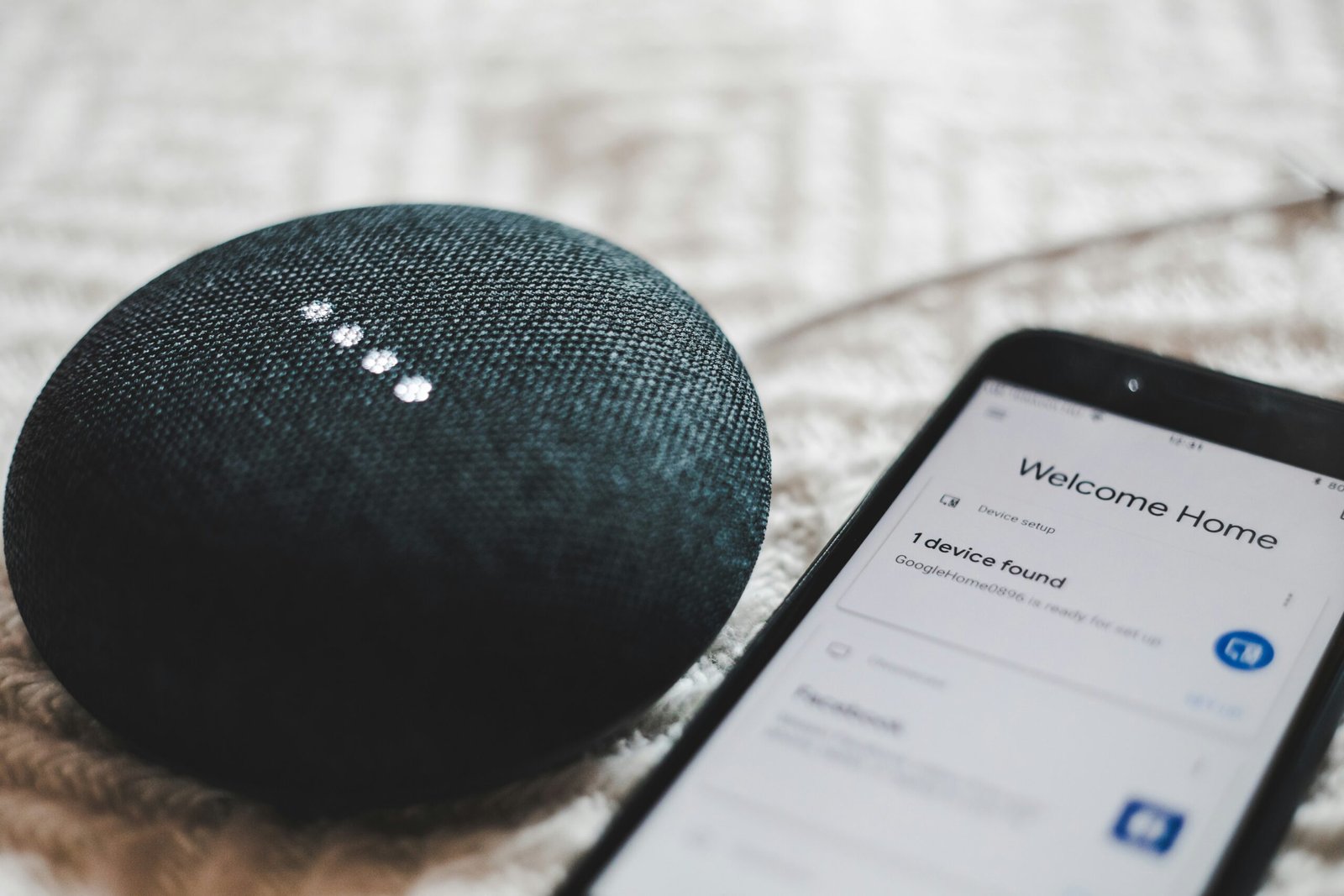Introduction to Smart Home Technology
In recent years, smart home technology has emerged as a transformative force, revolutionizing the way individuals interact with their living spaces. At its core, smart home technology involves the integration of various interconnected devices that can be controlled remotely through smartphones, tablets, or voice commands. This seamless connectivity allows users to manage daily tasks more efficiently, enhancing convenience and simplifying everyday routines.
One of the primary advantages of incorporating smart devices into a home is the remarkable improvement in security. Smart home technology provides users with innovative solutions such as smart locks, security cameras, and motion sensors, which can be monitored in real time. These advancements empower homeowners to keep a vigilant eye on their property, even when they are away, contributing to peace of mind and heightened safety.
Moreover, smart home technology enables significant energy savings, a feature that has gained considerable traction among environmentally-conscious users. Devices like smart thermostats and energy-efficient lighting systems allow homeowners to optimize their energy consumption by providing insights on usage patterns and automating settings. This not only reduces utility bills but also promotes sustainable living practices, reflecting a growing concern for the environment.
The rising popularity of smart homes can also be attributed to the rapid escalation of technological advancements. With the proliferation of the Internet of Things (IoT), an increasing number of household appliances and systems are becoming “smart.” From refrigerators that remind you to buy groceries to smart speakers that control your home’s ambiance, these devices are becoming more accessible and user-friendly, catering to a wider audience than ever before.
As smart home technology continues to evolve and become integrated into our daily lives, it holds the promise of not only enhancing comfort and convenience but also contributing to a safer and more energy-efficient future. With the right devices, anyone can transform their living space into a smart home tailored to their needs.
Smart Speakers and Voice Assistants
In recent years, smart speakers and voice assistants have emerged as pivotal elements in the integration of smart home technology. These devices serve as central hubs, allowing users to effortlessly manage various connected smart devices through natural voice commands. Whether it’s adjusting lighting, controlling the thermostat, or managing security systems, these voice-activated assistants streamline home automation, enhancing convenience and efficiency.
One of the most appealing features of smart speakers is their hands-free operation, which allows users to perform tasks without the need for physical interaction. For instance, simply saying “Play my favorite playlist” or “Set a timer for 10 minutes” can execute functions that often required manual input. This capability is particularly beneficial in busy households where multitasking is the norm. Users can enjoy music, audiobooks, or podcasts while engaged in cooking, cleaning, or any other tasks, making daily routines more enjoyable and efficient.
Moreover, smart speakers commonly integrate with a wide array of other smart home devices. Many models support compatibility with leading brands of smart lights, security cameras, and appliances, enabling a cohesive ecosystem that enhances user experience. The seamless integration allows users to create custom routines, such as setting the mood for movie night by dimming lights and turning on the TV with a single command. This level of automation not only simplifies processes but also contributes to energy efficiency in the home.
Additionally, smart speakers often come equipped with built-in voice assistants, such as Amazon’s Alexa or Google Assistant, both of which continuously evolve with new features and capabilities. This ongoing development ensures that users benefit from cutting-edge technology, enhancing the functionality and value of their smart speakers. Overall, smart speakers and voice assistants represent a significant leap toward creating a truly intelligent home environment.
Smart Lighting Solutions
Smart lighting solutions have revolutionized the way homeowners control and customize their home environments. These advanced lighting systems offer numerous benefits, including enhanced convenience, energy efficiency, and improved ambiance. With features such as scheduling, remote access, and compatibility with various smart home platforms, consumers can now tailor their lighting to fit their lifestyle seamlessly.
One of the primary advantages of smart lighting is the ability to schedule when lights turn on and off. Homeowners can program their lights to illuminate automatically at dusk or set them to mimic activity in the house while away, providing an added layer of security. This scheduling capability not only helps enhance safety but also contributes to energy savings, as homeowners can avoid unnecessary electricity consumption.
Remote access is another critical feature of smart lighting solutions. Many systems can be controlled via mobile applications, allowing users to adjust their home lighting from virtually anywhere. Whether dimming the lights for movie night or ensuring porch lights are turned on before returning home, this convenience is unmatched. Furthermore, most lighting systems are compatible with voice assistants, enabling users to control their lights hands-free simply by using verbal commands.
In addition to scheduling and remote access, smart lighting often includes options for color-changing bulbs. These bulbs provide the versatility to create various moods and atmospheres within the home, from bright, energizing white light to warm, cozy hues ideal for relaxation. Homeowners can easily adjust colors and brightness levels, personalizing their environment to suit any occasion.
Ultimately, the integration of smart lighting solutions into a home not only enhances convenience but also showcases a commitment to energy efficiency and effective home management. By investing in these innovative solutions, individuals can enjoy a transformed living space that adapts to their specific needs and preferences.
Smart Thermostats for Energy Savings
Smart thermostats are an essential component of modern smart home technology, offering a blend of convenience and energy efficiency. One of their most impressive features is the integration of learning algorithms. These intelligent systems observe and analyze a homeowner’s daily routines and preferences, enabling the thermostat to adjust heating and cooling settings autonomously. This tailored approach helps maintain a comfortable indoor climate while also preventing unnecessary energy consumption.
In addition to the learning capabilities, smart thermostats provide users with remote access via smartphone applications. This feature allows homeowners to monitor and control their heating and cooling systems from virtually anywhere. Whether it’s adjusting the temperature before returning home or ensuring that the heating system is off while away on vacation, this level of control promotes energy savings without sacrificing comfort. Users can receive alerts on changes in temperature or energy usage patterns, thereby facilitating proactive adjustments to enhance efficiency further.
Furthermore, many smart thermostats come equipped with energy-saving settings designed to reduce utility bills without compromising on comfort. For instance, they can automatically lower the temperature during the night or when no one is home. Some models even provide insights into energy consumption trends, enabling users to understand their usage better and make more informed decisions about adjustments. By proactively managing their home environment, users can significantly reduce their carbon footprint while enjoying a more efficient living space.
Overall, the incorporation of smart thermostats into a household can lead to remarkable energy savings and an enhanced quality of life. With their sophisticated features, these devices not only contribute to a comfortable home environment but are also an integral part of efficient utility management.
Smart Security Cameras and Systems
In today’s rapidly evolving technological landscape, smart security cameras and home security systems have emerged as essential tools for enhancing safety and providing peace of mind for homeowners. These devices utilize advanced technology to offer real-time monitoring and alerts, ensuring that property owners remain informed about their surroundings. One of the most significant features of smart security cameras is motion detection, which allows the system to detect unusual activity. When motion is detected, users receive instant notifications on their smartphones, enabling them to respond proactively.
Remote viewing capabilities are another key advantage that smart security cameras offer. Homeowners can access live video feeds directly from their smartphones, tablets, or computers, enabling them to monitor their properties from anywhere in the world. This feature is particularly useful for those who travel frequently or maintain second homes, as it allows for constant oversight without being physically present. Furthermore, many modern smart security solutions incorporate night vision technology, ensuring that surveillance is effective even in low-light conditions. This capability is crucial for enhancing safety during nighttime hours, providing round-the-clock security.
Integration with smartphones and other smart devices is a hallmark of contemporary home security systems. Users can manage their security settings, review recorded footage, and receive alerts through dedicated mobile applications. This seamless connectivity not only simplifies user interaction but also promotes a comprehensive approach to home security, as homeowners can coordinate other smart devices, such as smart doorbells and alarms.
Ultimately, the adoption of smart security cameras and systems significantly contributes to a heightened sense of safety and security for homeowners. With features such as real-time alerts, motion detection, and remote access, these devices not only serve as deterrents against potential threats but also empower owners with the ability to take immediate action when necessary. The integration of such technologies into everyday life illustrates how modern solutions can effectively address concerns about home safety.
Smart Doorbells with Video Monitoring
Smart doorbells have emerged as a significant innovation in home security and convenience, integrating video monitoring and communication features in a single device. These gadgets allow homeowners to see, hear, and communicate with visitors from virtually anywhere, enhancing overall accessibility and security. Using a smartphone app, individuals can receive real-time notifications when someone approaches their front door. This capability is particularly beneficial for those who spend extended periods away from home or have mobility challenges.
One notable advantage of smart doorbells is the ability to visually identify visitors before answering the door. The built-in cameras often provide high-definition video quality, ensuring clear images. Many models support night vision, allowing for effective monitoring even in low-light conditions, which contributes to homeowner peace of mind during nighttime hours. Surveillance capabilities can be further augmented with motion detection features that send alerts whenever movement is detected near the entrance, providing an extra layer of security against unwanted visitors or potential intruders.
Moreover, smart doorbells offer package delivery notifications, a crucial feature in an era where online shopping is increasingly popular. These notifications inform homeowners when packages arrive, reducing the risk of theft and making it easier to manage deliveries efficiently. Additionally, some smart doorbell systems allow for two-way audio communication, enabling homeowners to speak with delivery personnel or visitors without opening the door. This feature not only adds convenience but also enhances safety by allowing individuals to verify identities before granting access to their homes.
In summary, smart doorbells equipped with video monitoring capabilities serve as a practical and efficient solution for modern homeowners seeking to enhance their home security and streamline daily interactions with visitors. These devices offer unparalleled convenience through features such as remote communication, package delivery alerts, and advanced surveillance, revolutionizing the way individuals manage their front entryways.
Smart Appliances for Everyday Tasks
Smart home technology has significantly transformed everyday tasks, making them more efficient and convenient. Among the most impactful innovations are smart appliances designed to streamline daily chores in a variety of ways. For instance, smart refrigerators are equipped with advanced features that allow users to keep track of their grocery inventory. These devices can send notifications when items are running low, suggest recipes based on the ingredients available, and even create shopping lists, all of which contribute to reducing food waste and promoting healthier eating habits.
Another noteworthy example is the Wi-Fi-enabled oven, which can be preheated remotely via a smartphone application. This means meals can be prepared with less hassle, as users can set the oven while commuting home or multitasking in other rooms. Such appliances not only save time but also enhance cooking precision, allowing for better meal outcomes. Likewise, smart dishwashers can learn user preferences and adjust wash cycles accordingly, leading to increased efficiency and water savings.
Moreover, smart washing machines and dryers offer features such as cycle customization and remote monitoring. Users can receive notifications once laundry is done or even troubleshoot issues using connected apps. This integration simplifies the often tedious chore of laundry, thus improving overall household efficiency. Furthermore, smart coffee makers enable individuals to brew coffee on demand or set schedules for brewing, ensuring that a fresh cup is ready as soon as they wake up.
Overall, the introduction of these smart appliances into daily routines promotes time-saving, improved organization, and healthier lifestyle choices. By incorporating such technologies into their homes, individuals can experience a smoother, more convenient daily life, ultimately achieving a higher quality of living.
Smart Home Hubs and Integration
Smart home hubs serve as the backbone of a connected home, centralizing control for a variety of smart devices and enabling seamless automation through programmability and routines. These devices function as a unified interface, allowing users to manage everything from smart lighting and temperature controls to security systems and entertainment devices with ease. By streamlining interactions, smart home hubs create a more cohesive smart home ecosystem that enhances convenience and efficiency.
One of the most notable advantages of utilizing a smart home hub is its capacity for device integration. Various manufacturers produce an array of smart devices that may not naturally communicate with one another. A smart hub bridges these gaps, allowing disparate devices, regardless of brand, to work in unison. For instance, a user can integrate a Philips Hue smart light with a Nest thermostat, creating a coordinated environment that adjusts lighting and temperature according to individual preferences or routines.
Moreover, hubs often provide users with advanced automation capabilities. Homeowners can establish routines that trigger multiple functions simultaneously. A “Good Night” routine might turn off all the lights, lower the thermostat, and activate a home security system with just a single command. Such programmability simplifies daily tasks and enhances overall lifestyle comfort and efficiency.
As technology progresses, modern smart home hubs also support voice commands through virtual assistants like Amazon Alexa, Google Assistant, and Apple Siri, broadening accessibility for users. This hands-free operation enables quick adjustments and commands, making smart home management more intuitive and user-friendly. In essence, a smart home hub not only centralizes control and integration of devices but also represents a pivotal element in creating a sophisticated and enjoyable home environment.
Conclusion: The Future of Smart Homes
The integration of smart home devices into daily living has dramatically transformed how individuals manage their households. These innovations provide enhanced convenience and greater efficiency, allowing homeowners to control various elements of their homes seamlessly through technology. By adopting smart technology, individuals can streamline their routines, improve energy management, and enhance security. The convenience offered by devices such as smart thermostats, smart locks, and connected appliances aids in creating a more comfortable living environment that aligns with the demands of modern life.
Looking towards the future, advancements in smart home technology promise to further elevate these benefits. With the continuous evolution of artificial intelligence and the Internet of Things (IoT), we can anticipate smart devices becoming even more intuitive, able to learn user preferences and behaviors for personalized automation. As compatibility among devices improves, integration will become more sophisticated, allowing for seamless communication between various systems within a smart home ecosystem. This interconnectedness not only promotes enhanced user experiences but also opens doors for new applications that can revolutionize how we approach household management.
Additionally, emerging technologies such as 5G Internet will facilitate faster, more reliable connections between devices, enabling real-time data exchange and improving both responsiveness and reliability. As the market for smart home products expands, consumers can expect increased affordability and accessibility, making smart devices a feasible option for a broader audience. This expansion not only reflects a growing acceptance of technology in everyday life but also underscores a societal shift towards prioritizing sustainability and efficiency in home management.
In conclusion, the future of smart homes is promising, with endless possibilities for enhancing convenience and efficiency in our daily lives. Embracing smart technology today sets the foundation for a comfortably automated tomorrow, reinforcing its significance in shaping our living environments for the better.


